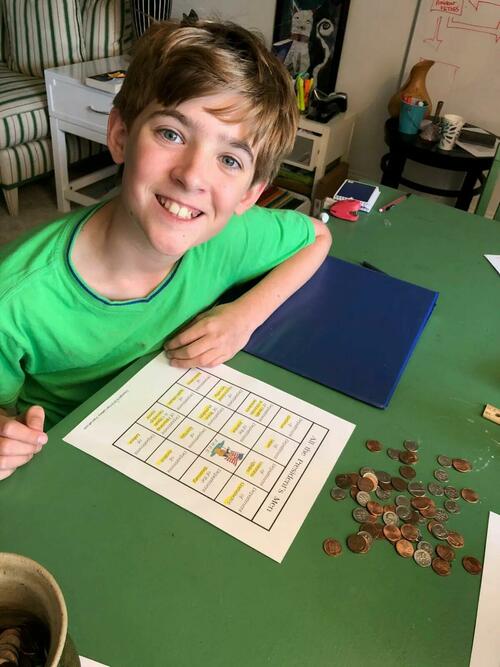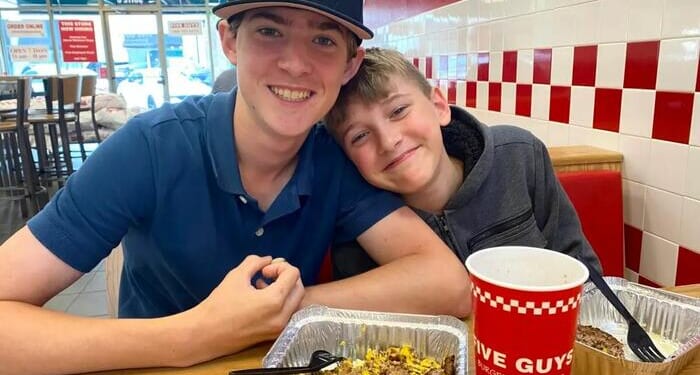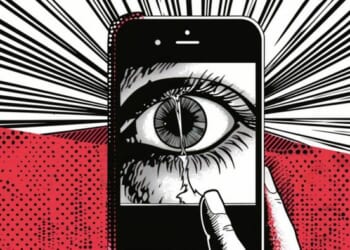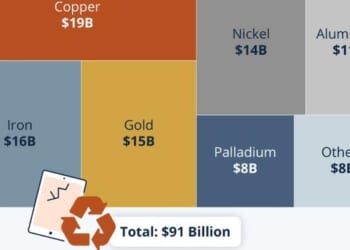Authored by Amy Denney via The Epoch Times (emphasis ours),
In the most unexpected way, Jenny Dunlap stumbled upon a solution for her oldest son’s attention deficit hyperactivity disorder (ADHD).
When her youngest child was diagnosed with Type 1 diabetes, Dunlap’s whole family stopped eating sugar and grains. By eliminating these foods, her older son, John – whose behavioral and social struggles hadn’t been resolved with various therapies or medication – was suddenly like a different person.
“He brought home A [grades]. All of his teachers were happy. He was organized. His constipation went away. All sleep issues went away. There were no peer problems anymore. It was literally like a light switch,” Dunlap said. [ZH: we’re sure John appreciates the world knowing about his constipation, thanks Mom…]
Removing certain foods from a child’s diet appears to be a promising therapeutic approach for those with ADHD. Diet is not likely to be recommended in a conventional setting because special diets are among lifestyle modifications that are often dismissed for too little evidence or benefit to recommend. However, there is evidence for guidance elsewhere.
Power of Elimination
Some children with ADHD may benefit from eliminating foods from their diet, according to a review on the role of nutrition in managing ADHD. Published in Current Nutrition Reports, the review found scant evidence to support supplementing with micronutrients, probiotics, and omega-3 fatty acids.
However, a diet described as a “few-foods diet” may become a therapeutic option for children with ADHD. The strategy involves eliminating most foods from the diet for a period of time and then slowly reintroducing them one at a time to see whether they trigger ADHD symptoms.
Up to 60 percent of those using the diet responded positively, the authors wrote, revealing the role food intolerance may play in ADHD symptomatology.
“This promising personalized nutrition-based approach to the management of ADHD deserves further systematic investigation and should be considered in all children with ADHD,” the authors stated.
The review noted several double-blind placebo-controlled studies that have linked foods to ADHD triggers and the few-foods diet to improvement of symptoms. The few-foods diet eliminates all but easily digestible, plain foods, such as lamb, turkey, rice, butter, corn, potatoes, honey, and some vegetables.
Other research has shown that hyperactivity in children is associated with artificial food colors and chemical preservatives.
Currently, the American Academy of Pediatrics’ treatment recommendations highlight diet modification among non-medication treatments for ADHD that have either too little evidence to recommend or have little or no benefit. The academy didn’t respond to The Epoch Times’ question about whether recommendations have been updated to include diet.
Official Recommendations
Currently, conventional treatment for children with ADHD offers a dichotomy of either behavioral therapy starting in preschool-age children or medication.
Medication should not be a first-line treatment for preschoolers. Instead, younger children should receive behavioral classroom interventions as the first line of treatment.
Parent training in behavior management is so effective for all children that the guidelines suggest it be recommended before pursuing an ADHD diagnosis.
Methylphenidate, a nervous system stimulant known by brand names such as Concerta and Ritalin, can be used for 4- and 5-year-olds if behavioral interventions don’t result in significant improvement and if there is moderate to severe functional disturbance.
“The clinician needs to weigh the risks of starting medication before the age of 6 years against the harm of delaying treatment,” according to guidelines.
There is concern, however, that medication might be given too soon in many cases. A recent study published in JAMA Network Open found that among preschool-age patients who visited their primary care doctor for ADHD at eight U.S. health systems, 68.2 percent were prescribed medication, and 42.2 percent had medications prescribed within 30 days of their diagnosis.
The guidelines note that methylphenidate is the only ADHD medication that can be used for preschoolers, as it has the best safety and efficacy record. Nevertheless, the guidelines said that the drug does not have U.S. Food and Drug Administration approval for use in preschool-age children. Methylphenidate can cause low appetite, sleep disruption, headache, increased heart rate, and other side effects.
Proper Use of Medication
Dunlap was less concerned with the official guidelines and more focused on following her intuition when John was young. That meant avoiding medication as long as possible.
The wild one of her three children, John, often got into trouble, lost friends, and was kicked off a team sport. His teachers frequently complained, and after various vitamins, cognitive behavioral therapy, coping skills, and meditation failed, Dunlap finally relented to the medication she’d been avoiding. By then, he was in the fourth grade.


John tried several stimulant medications until he ended up on Concerta, which she describes as “the best of the worst.” Still, the drug wasn’t a panacea. He struggled emotionally and didn’t have optimal sleep or bowel movement habits.
Reflecting on John’s journey, Dunlap was frustrated that nutrition or diet was never addressed at any of the appointments John had over the years, particularly after failed cognitive behavioral therapy and continued struggles.
“It’s just so easy to label everybody, and it’s too easy to hand out these prescriptions,” Dunlap said. “Parents aren’t told, ‘Hey, let’s check some other avenues and see why your kid is behaving this way.’”
Food as a Root Cause?
It’s conceivable that poor, sugar-laden eating patterns are driving symptoms that mimic or exacerbate ADHD, psychotherapist Karen A. Dwyer-Tesoriero told The Epoch Times.
One common scenario is children who eat sugary cereals for breakfast, starting their school day with a sugar crash that causes them to act out or become lethargic and inattentive, she said.
Psychologists and researchers Bonnie J. Kaplan and Julia J. Rucklidge recommend dietary changes before counseling and family therapy.
In their book, “The Better Brain,” they recommend that mental health clinics educate all new referrals on nutrition and how to shop for whole foods. They estimated that one-third of mental health referrals, including ADHD, would need no further services if they adjusted their diets.
“Given that all our mental health resources are stretched very thin, isn’t this a good-news story?” they wrote, adding that in years of practice, clients reported that they could better implement therapeutic strategies once they began eating more whole foods.
The Ease and Affordability of Diet
A good start is eliminating artificial dyes, flavors, and additives, according to Julie Matthews, certified nutrition consultant and author of “The Personalized Autism Nutrition Plan,” a book that also covers ADHD.
From there, parents can consider a gluten-free or dairy-free diet, or the Feingold diet, a whole-food diet with no artificial colors, flavors, or preservatives that is also low in naturally occurring salicylates, a toxin produced by some plants, she told The Epoch Times.
In an observational study she authored on various healthy diets in children with autism, the Feingold diet was found to reduce hyperactivity by 45 percent.
“It comes down to what is bothering the individual and removing that,” Matthews said. “It’s a bit tragic that something so simple could make such a profound difference, and yet people are not hearing about it when it’s such an easy thing to change.”
In some cases, she said, there may be imbalances in the gut microbiome or other nutritional changes that are more complicated to pinpoint. However, in many cases, it boils down to eating a healthier diet with fewer additives.
A plant-based Mediterranean diet, for instance, has proven beneficial for brain health, among other lifestyle interventions such as sleep and exercise.
Careful Integration of Guidelines
Medication is helpful, and it holds a place among other tools.
Integrative pediatrician Dr. Joel “Gator” Warsh told The Epoch Times that a careful application of ADHD recommendations should involve earnestly trying behavioral therapy and parent training before medication, particularly in younger children, as the guidelines suggest.
Cognitive behavioral therapy begins with a diagnosis that identifies a child’s unique struggles and then involves tools that target that child’s specific struggles, such as improving focus or reducing impulsivity.
Parent training is used to educate parents on the way their child’s brain works and how to best support deficiencies with tools learned in therapy.
“When symptoms remain severe—impacting safety, school performance, relationships, and daily functioning—medications can have an important role,” Warsh said. “In those cases, short-term use of stimulants, carefully monitored, can give children the ability to focus, follow routines, and begin building healthier work and life habits.”
The goal is to use the lowest effective dose for the shortest time necessary while continuing to work on behavioral, educational, and lifestyle changes, he added.
Other Options
Besides behavioral and parental training, experts said there are plenty of other ways to deal with symptoms such as hyperactivity, behavioral outbursts, and lack of focus that are common in young children.
Warsh suggested offering daily opportunities for vigorous play, creating more structured routines, reducing screen time, and optimizing sleep. Additionally, there could be underlying contributors such as anxiety, learning differences, and poor gut health.
Be cautious about trendy programs, he added, such as mindfulness apps and broad elimination diets, in which evidence is mixed. Consider asking about an individualized education program at school.
Dwyer-Tesoriero suggested some strategies that can work in the morning and evening when parents are most likely to be with their children:
- Identify an exercise or movement like dancing or stretching that your child likes and encourage it daily.
- Encourage kids to hyperfocus on something they love.
- Calmly tell your children, if they start misbehaving, that there will be consequences, rather than reacting to intense emotions.
- Pick one battle at a time, such as working on closing cabinet doors after use. Don’t work on other behaviors until they’ve mastered one.
- Substitute immediate rewards for behavior charts, such as offering time for video games when you notice they’ve completed a task without asking or behaved well.
- Use visual checklists for routine expectations, such as getting dressed and ready to leave the house or for brushing teeth.
It’s helpful to remember that not all ADHD traits are negative, Dwyer-Tesoriero added, noting that some are actually quite useful.
“There are a lot of careers out there that really lend themselves to ADHD,” she said. “Our society is filled with adults who have ADHD, and it is not, for lack of a better word, like the kiss of death.”
* * * [ZH] The first two weeks are the hardest. We recommend this channel for more.
Loading recommendations…



















